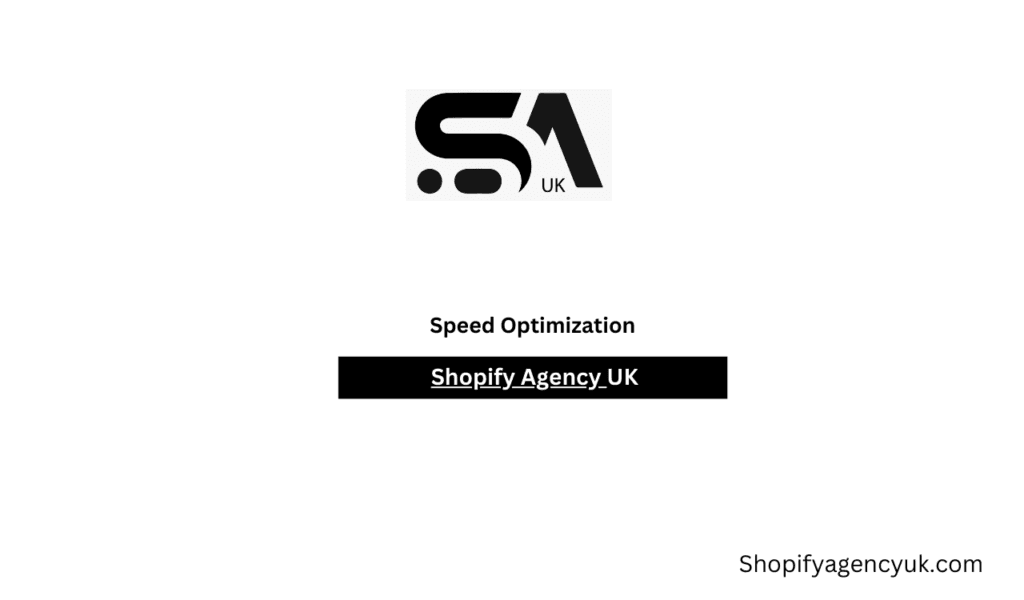I’m stoked to give away speed optimization tips for Shopify stores. In the present day, quick-loading websites are vital to achievement. I have seen for myself, during my time as a Shopify developer, how making a site like Shopify Agency Manchester load faster can improve not only the experience of the user but also the return on investment.
Why Speed Optimization is Essential for Shopify Stores
To the best of my knowledge, speed optimization is the main factor that needs to be focused on in each online store. I have observed that even a slight delay in loading time can lead to increased bounce rates and decreased conversions. For Shopify prevalent, the improvement in the performance of the site not only becomes more user-friendly and faster checkout procedures but also gets better google rankings.

Factors Affecting Load Speed in Shopify Stores
What I found is that many factors are working against speed, which are usually the “bottleneck” issues in determining the slow loading of web pages:
- Large images and media files (The common suspect of which are the images and media files too big size which are common throughout the web page)
- Excessive apps and plugins (including too much use of include plug-ins or apps)
- Poor theme optimization (This usually is the case when there is a use of an old theme which is not compatible with the current systems)
- Third-party scripts (in some cases, third parties’ scripts cause the problem)
- Inefficient Liquid code (The most common issue causing the page to be slow is some inefficient code due to the syntax or use of it.)
Optimize Images for Faster Load Times
One of the best strategies I frequently use is the image optimization. I usually advise:
- Using proper formats like WebP (in some inevitable cases, one has to male use of a few fancy formats that normally are not handled by other browsers)
- Compressing images before uploading (One of the great ways to reduce image file sizes is to compress the images before uploading)
- Implementing lazy loading (Of course, it would be extremely useful to get a plugin that automatically lazy loads the images of your page when the user scrolls to them.)
- Using responsive images (I always suggest that adding images to a site that are responsive is a good practice because unnecessary images and excessive bandwidth get eliminated in small browser screens.)
Minimize HTTP Requests
Heeding the aforesaid suggestion, to reduce HTTP requests, I typically:
- Combine CSS and JavaScript files (By dividing the browser screen into two styles and placing the buttons on one screen and the article in the middle quality of pages gets increased)
- Use inline CSS for above-the-fold content (One thing you can do to decrease the number of requests from the site to server is to inline critical CSS style to the body of the HTML page containing the above-the-fold content.)
- Limit the use of external scripts (As a result of the faster request cycle, external scripts can improve the performance of the site.)
Leverage Browser Caching

Another important piece of information I always tell others is caching the browser. This enables repetitive visitors to load your site more quickly and good user experience is all there.
Optimize Shopify Themes for Speed
When it comes to Shopify themes, I tend to:
- Choosing lightweight themes (Usually developers focus on this, when the theme itself weighs over a few megabytes, you should not expect a blazing fast page)
- Minifying CSS and JavaScript (However depending on the site there may be more files to comb through or smaller files that still demand a neat place, in which case minifying helps.)
- Removing unused code (Some of the techniques that are to be used in fixing the problem is to remove those unnecessary HTML, CSS, and JavaScript.)
- Using asynchronous loading for JavaScript (Asynchronous loading of the java script files will make the page load faster since the files will be downloaded in parallel.)
Reduce the Number of Shopify Apps
In my experience, having a whopping number of apps can greatly reduce the speed of a store. I always tell my clients to:
- Regularly audit their apps (User experimenting with the interactive app influence the interface of an app.)
- Use multipurpose apps when possible (In the section User Management there are applications like E.g. Microsoft, SharePoint, the Algerian Ministry of National Education, etc. that are used by multiple Institutions and give you access to all the applications that are applicable to your organization/country.)
- Keep all apps updated (Technology always advances, so applications should undoubtedly be updated frequently.)
Use a Content Delivery Network (CDN)
Although Shopify is equipped with an integrated CDN, it is often the case with shops that cater to a global customer base, that additional CDN services become a necessity. In this manner, the user who is from another part of the world can also connect to the local CDN server near their place and thus they can get good browsing speed.
Regularly Test and Monitor Performance
It is crucial to always keep an eye on performance. I usually run through with applications like Google PageSpeed Insights and GTMetrix to check if my communication will be improved or if there is a more advantageous online service to choose from.
Conclusion
Through my association with Shopify development like Shopify Agency in UK I have been astonished by the fact that the performance speed of the store has a direct relationship with the user’s experience. By applying these methods you’ll guarantee that your Shopify store is up to par with the market standards and that the users’ shopping experience is not only enjoyable but also streamlined and efficient.
